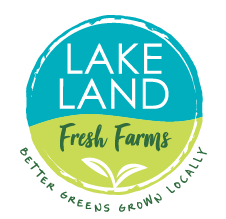Hydroponics vs. Traditional Farming: 8 Improvements Made by Hydroponic Systems
November 12, 2021
/
Original Article From Eden Green Technology
Article published on January 12, 2021.
“Traditional farming has remained mostly unchanged for centuries. Yes, there have been advances in irrigation, genetic engineering of seeds, and commercial farm equipment. But we still place seeds into the soil, apply water and sun, and wait for the harvest season. That’s how it’s always been. But is that the best way to grow produce on a commercial scale?
Today, there are several newer farming methods that are giving businesses within the food industry more options. We believe hydroponics systems (particularly vertical ones) are the farms of the future, allowing us to produce great amounts of healthy fruits and vegetables to sustainably feed a growing population on a large scale. Here are just a few of the ways hydroponic farming is an improvement over traditional farming methods.
1. Greater Yields
First and foremost, a hydroponic system grows nutrient-dense produce in greater quantities. In fact, we’ve found that our hydroponic vertical farms can grow about 240 times more than traditional farming methods.
Partially, this is because our hydroponic greenhouses allow for more harvests per year. Additionally, because plants get their nutrients directly from water instead of having to leech them from soil, hydroponic plants grow faster and larger. One of our greenhouse systems can produce 2.7 million meals per year.
2. Less Space Needed
Growing more food in less space? It may sound too good to be true, but this is exactly what our vertical hydroponic growing system can do. Our greenhouses are designed to fit into about an acre and a half of space. That’s about the size of a 200 car parking lot. And since there’s no soil requirement, they can be built almost anywhere. Want to build your greenhouse in an old empty car dealership’s lot? Or how about the roof of a big box store? On the grounds of a university or hospital? Or what about at your company’s corporate headquarters? All of these options would work, as well as many more. This means you can build hydroponic farms downtown in what would otherwise be a food desert. Or add one on to your company’s R&D department, allowing your research to be conducted on site easily. The possibilities are endless!
3. Less Water
In our rapidly changing world, clean water is becoming more and more scarce. The World Wildlife Fund finds that about 2.7 billion people are facing water shortages at least one month out of the year, with more than a billion having no access to clean water at all. Given this increasingly dire situation, the ability to farm with less water has never been more important.
It may seem counterintuitive, but hydroponic systems actually use about 99% less water than traditional farming. This is because there is no water lost to the soil, no water lost to evaporation, and the water in the system is recycled again and again. This means that hydroponic greenhouses can be run in even the most severe drought conditions with little to no disruption.
4. Sustainable Farming
Traditional farming contributes greatly to soil degradation around the world. We are currently losing fertile land at an alarming rate. By contrast, in our greenhouses, you can regrow the same crops over and over again without worrying about crop rotation. Since hydroponic systems require no soil, they’re an excellent way to stop this problem in its tracks.
Our hydroponic greenhouses also seek to use solar power as much as possible, leading to little or no need for fossil fuel power sources. So you’ll be growing greens in the greenest way possible!
5. Climate Proof
Speaking of changes in the global environment, our increasingly unpredictable climate has become a major problem for farmers. We constantly see crops destroyed by flooding, drought, and other climate-related problems. Because our greenhouses contain their own microclimates, they are immune to early frosts and heatwaves, droughts and flooding. They can also be built in areas where the climate is typically too hot or too cold to grow certain types of food. This means year-round local produce in areas where it was unthinkable before.
6. Seasonally Agnostic
Imagine being able to grow 11-13 more harvests per year than a traditional farm. Just as climate is no challenge for our hydroponic growing systems, seasons hold no sway over our plants either. So many harvests per year is a reality, rather than a dream. The climates inside our hydroponic farms are carefully monitored and controlled, meaning summer crops can grow even in the coldest months and harvest season is year round.
7. Outdoor Contamination Proof
Traditional farms are subject to contamination from any number of sources. Birds drop waste from above. Runoff from nearby animal agriculture can contaminate the groundwater. Air pollution and water pollution are constant concerns. Open air farming is increasingly leading to dangerous food-borne illnesses and their resulting food recalls. We recall-proof our produce by keeping it in carefully monitored greenhouse conditions, away from contamination risks.
8. Less Food Waste
Since hydroponic farming can be managed within the community it supports, there’s less time wasted in shipping produce across the country or around the world. Most of our crops reach their intended market within 48 hours of harvest. This means a longer shelf life once they hit the store, are purchased, and brought home. Not only that, because our greenhouses are outdoor contamination proof, there is zero risk of recalls and food-borne illnesses from typical outdoor threats. All of this amounts to less food waste and more healthy meals that actually make it to the table.
…”
Copyright 2021 by Eden Green Technology– All rights reserved.
To read the full article please visit: the Eden Green Technology web site.

